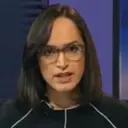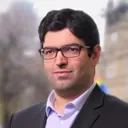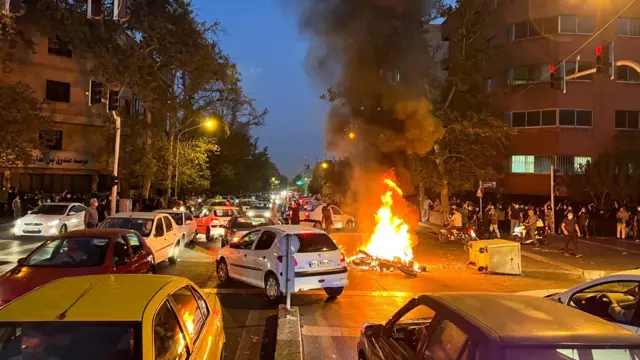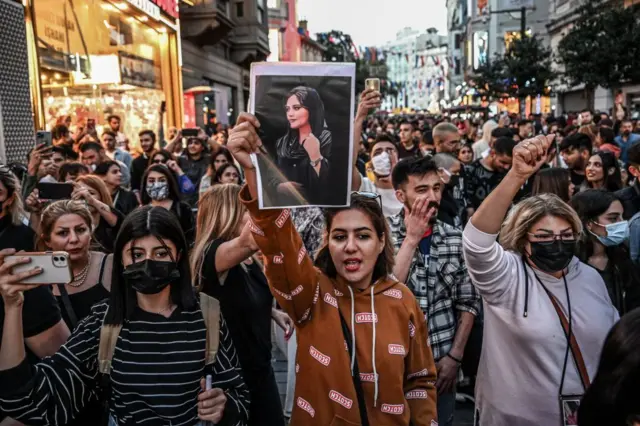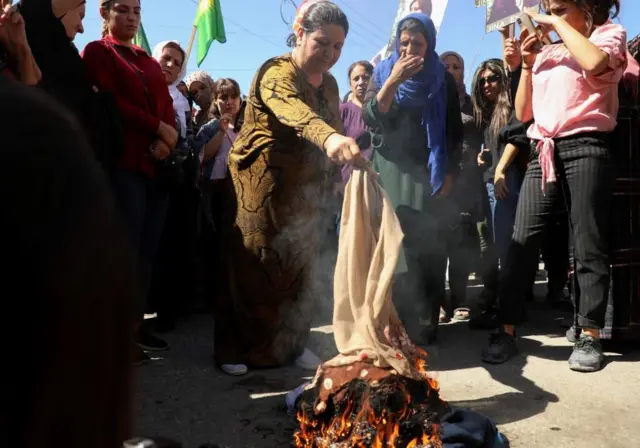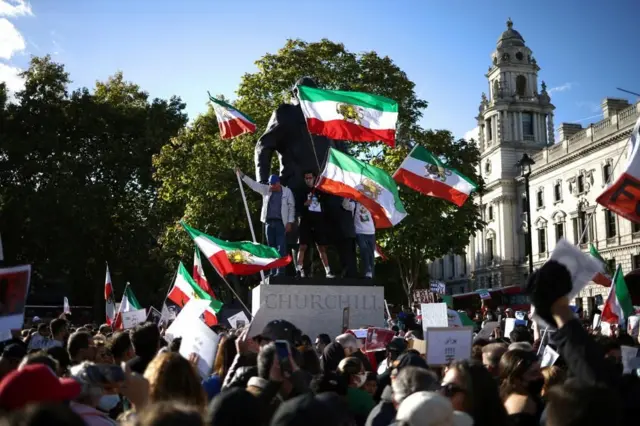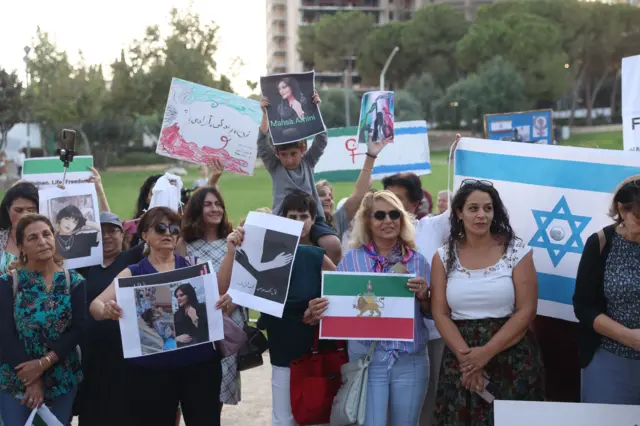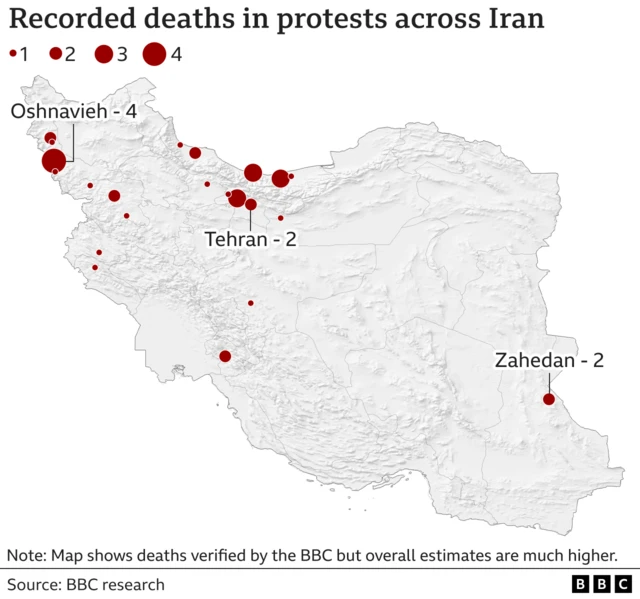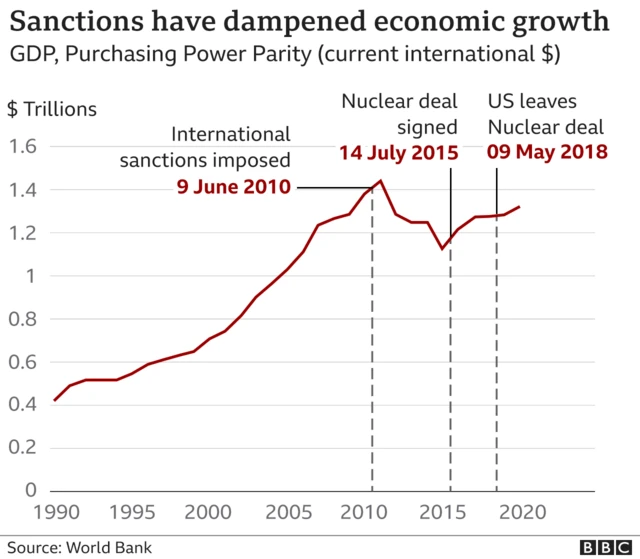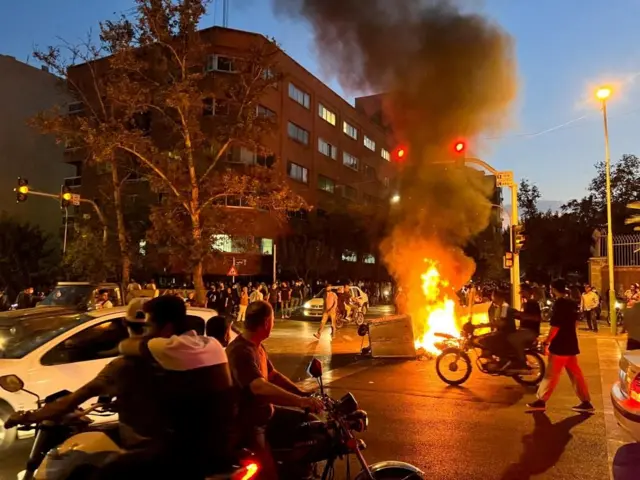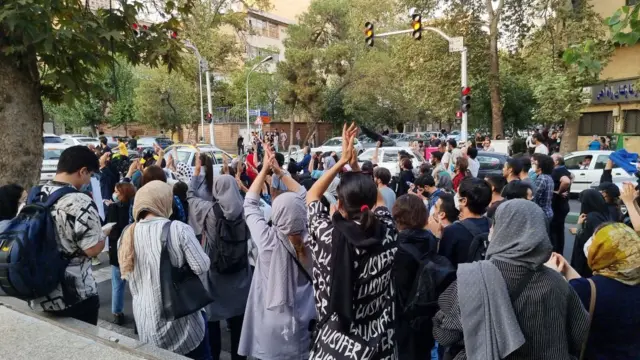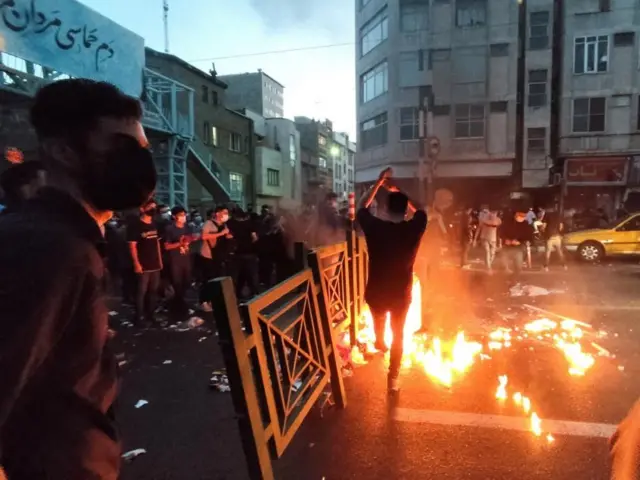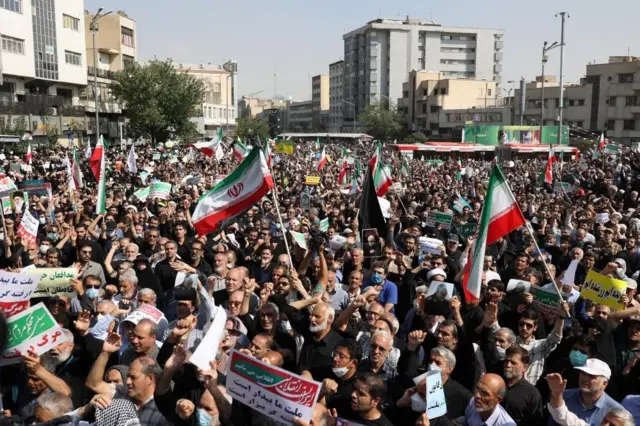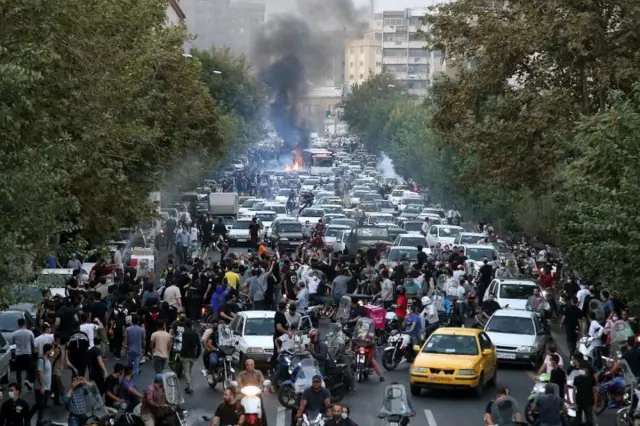
Could the protests actually lead to regime change?published at 15:28 BST 14 October 2022
 Lyse Doucet
Lyse Doucet
Chief International Correspondent
The next question comes from Martin Hampton - and others - who have asked whether the protest could actually lead to a change in leadership. "Won't the regime just 'sit tight' as long as needed?" says Martin.
Some senior officials have expressed concern about the crackdown, but their red line is the survival of the Islamic Republic.
There’ve been many protests over many years in Iran, over issues ranging from water shortages, rising prices, compulsory hijab. But this wave has drawn in many sectors of society across the country.
The authorities may believe they can deal with this wave, just as they have done in the past. The Supreme Leader, Ayatollah Khamenei, has said some protesters can be dealt with by "cultural means," or re-education. Others would be dealt with through judicial or security measures.
But many of the protesters are under the age of 25. It underlines the deep societal changes happening in Iran. As observer Vali Nasr put it, "rather than regime change, there may be changes in the regime" - if they accept that the source of this protest is inside Iran, and not outside, in the Western countries they now blame.
